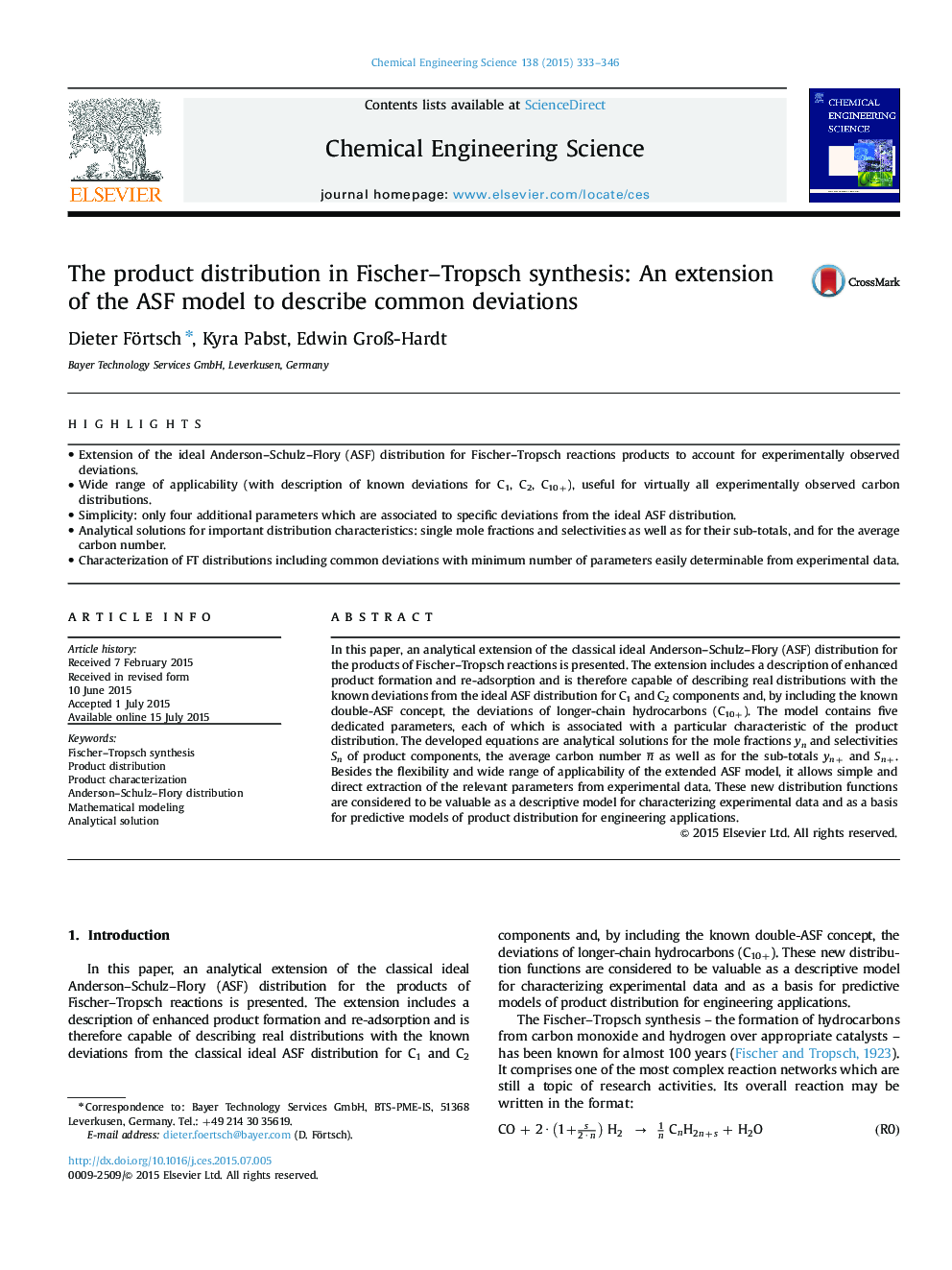| Article ID | Journal | Published Year | Pages | File Type |
|---|---|---|---|---|
| 154606 | Chemical Engineering Science | 2015 | 14 Pages |
•Extension of the ideal Anderson–Schulz–Flory (ASF) distribution for Fischer–Tropsch reactions products to account for experimentally observed deviations.•Wide range of applicability (with description of known deviations for C1, C2, C10+), useful for virtually all experimentally observed carbon distributions.•Simplicity: only four additional parameters which are associated to specific deviations from the ideal ASF distribution.•Analytical solutions for important distribution characteristics: single mole fractions and selectivities as well as for their sub-totals, and for the average carbon number.•Characterization of FT distributions including common deviations with minimum number of parameters easily determinable from experimental data.
In this paper, an analytical extension of the classical ideal Anderson–Schulz–Flory (ASF) distribution for the products of Fischer–Tropsch reactions is presented. The extension includes a description of enhanced product formation and re-adsorption and is therefore capable of describing real distributions with the known deviations from the ideal ASF distribution for C1 and C2 components and, by including the known double-ASF concept, the deviations of longer-chain hydrocarbons (C10+). The model contains five dedicated parameters, each of which is associated with a particular characteristic of the product distribution. The developed equations are analytical solutions for the mole fractions yn and selectivities Sn of product components, the average carbon number n¯ as well as for the sub-totals yn+ and Sn+. Besides the flexibility and wide range of applicability of the extended ASF model, it allows simple and direct extraction of the relevant parameters from experimental data. These new distribution functions are considered to be valuable as a descriptive model for characterizing experimental data and as a basis for predictive models of product distribution for engineering applications.
